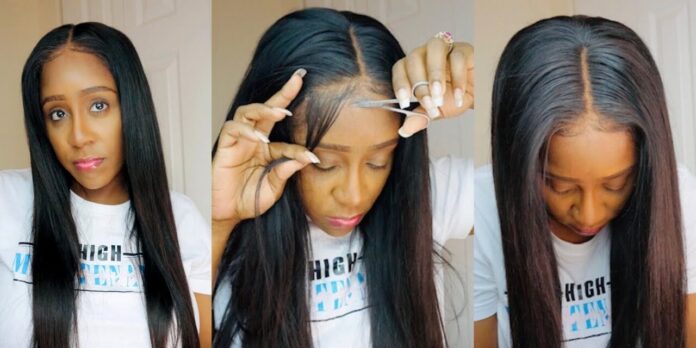Are you curious and wonder a lot about how lace wigs are made. In this article, will talk about how a 4×4 lace wig is prepared. Many people are shocked to realize that the lace wig does have a long and fascinating history.
Over time, the skill of wig-making has become more refined. It started using goatskin and an embroidery needle, and it has evolved since then. Many lace wigs contain more than 50,000 knots. Now, let’s talk about the process involved in making 4*4 lace wigs.
Step 1: Making the Lace
For a custom lace wig, a wig expert either starts with a lace shape that fits the typical woman’s head or crafts a special cast out of cellophane wrap and filament tape. Then, to keep light from shining into the mannequin’s eyes while he operates, plain blue paper is placed onto a hair block, the dummy’s head. As the lace base, polyester and cotton lace are laid on top.
Step 2: Choosing the Hair
When making lace wigs, a variety of hair kinds are employed. Indian Remy is the most common hair for human hair lace wigs because it has a quality that closely resembles that of most women. European Remy, which is popular among Caucasian women.
Step 3: Using the Hackle
A hackle can be used for lace wigs with accents or two-toned colors. A hackle resembles a large comb. A table is used to hold the hackle. The lace wig’s primary hair color is set down first, followed by the highlighted hair in the very center of the hair bundle. The wig expert then repeatedly flips the hair through the hackle, as if forcefully brushing it, till all the hair is mixed in and the weaker hairs are plucked out and left in the hackle.
A leather card with little metal pins acts as a holding card. It has two interlocking plates. The lace wig hair is positioned and fixed on the holding card. While a wig master operates, single or tiny chunks of hair are removed from this area.
Step 4: Lacing the Wig
The lace wig is famous for the lace material used to integrate smoothly into the head and the effort required by a wig master to create one. The final process starts once all of the hair has been prepped. A wig master starts lacing through the hair at the back of the neck with a bit of needle that looks like a fishhook. The hair is brushed midway through to ensure that it flows naturally.
While machines may perform these tasks, a lace wig must be created by hand for the most unnoticeable hairline. Many wig masters also style the hair once it’s finished. You can order additions like baby hair or a widow’s peak with a custom lace wig.
Conclusion
It’s much easier to appreciate a lace wig if you understand how it’s produced. It also makes the wig’s expensive price more reasonable. While the expert craft is pricey upfront, it pays off in the long run because you can use these wigs for years with careful care.










